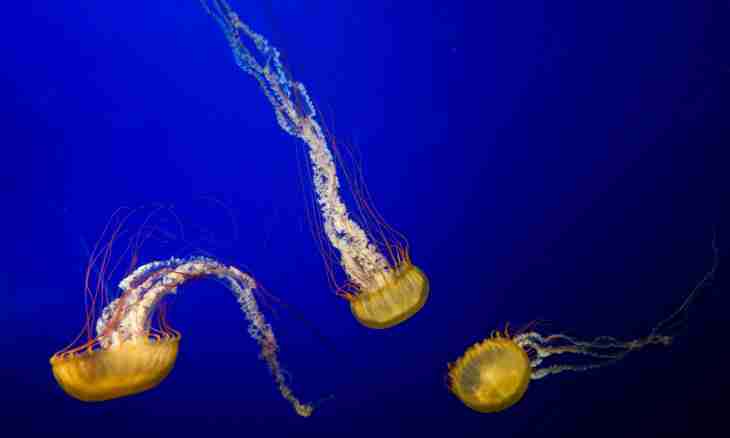Jellyfishes is the surprising inhabitants of sea and ocean waters who are the simplest animals on our planet. They have no brain, but at the same time there are two nervous systems. Besides, these unusual beings are capable to breathe all over which the minimum for 95% consists of water.
Today more than 3000 species of jellyfishes are opened by scientists. They differ not only, for example, in the sizes, but also life expectancy. Some jellyfishes live only 3-5 hours, others – several years. However there is a special type of these sea beings which received naming of Turritopsis dornii. There is an assumption that these jellyfishes are capable to live forever.
There are jellyfishes from testicles. Originally they represent larvae which are called planula. At this stage of development of a jellyfish are similar on the paramecium caudata aimlessly floating in ocean or sea waters. After a while planula stick to a bottom or a stone then from them the polyps looking as translucent or absolutely transparent corals gradually develop. Gradually the polyp is transformed in air who then and becomes a jellyfish. Scientists assume that the mentioned type of Turritopsis dornii is capable to go through development stages upside-down.
The jellyfish for once is able to postpone more than 30000 testicles. After a laying it is impregnated by a male.
Surprising beings received the name in honor of Medusa Gorgona – monsters from Ancient Greek myths. Experts assume that inhabitants of water depths appeared earlier, than dinosaurs.
Some species of jellyfishes have 24 eyes. At the same time another looks in couple one face up or directly, – down or back. It allows jellyfishes to control a look all space around. The similar sight gives the chance to beings successfully to hunt, disappear from enemies and with ease to be guided in water.
Features of the structure of a body allow jellyfishes to live at a depth up to 10 kilometers. As a rule, these animals lead a passive life. Usually they float after a current. However under certain circumstances of a jellyfish are capable and to float independently. For this purpose they involve water which after is sharply "spat out" in the body.
Among known to science there are many species of jellyfishes of poisonous. The sea wasp is considered the most dangerous. Its poison poisons a body of human or other animal for only a few seconds. The being near Australia lives, it is possible to meet it and in Southeast Asia. Length of tentacles of a sea wasp exceeds 3 meters. Even the light touch to a body of this jellyfish guarantees severe burns on skin, painful pain and long bad health.
Surprising fact: poisonous jellyfishes remain deadly to other living beings even then when throws out them from water on the coast. Moreover, some jellyfishes even after the death are capable to poison with poison if to touch them.
These unusual animals live in all oceans on our planet. The hugest jellyfish is considered Arctic. Diameter of its dome is at least 2 meters, and length of tentacles reaches 40 meters.
Jellyfishes infrequently exist alone. As a rule, they form groups which number sometimes reaches 2000-3000 individuals. Such congestions of sea beings are called "swarm".
In the Asian countries these beings are considered as a delicacy. In Japan the jellyfishes are bred quite often by houses, keep in aquariums. Worldwide since the Middle Ages of a jellyfish and their poison are used in nonconventional medicine. For example, make means which have laxative effect of some animals. And do the tinctures saving from the diseases affecting respiratory organs, in particular lungs of poisons.

